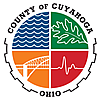COVID-19 Definitions
Below are common terms and definitions related to coronavirus (COVID-19).
Asymptomatic means that a person does not feel sick and does not show any signs of being sick.
Close contact is defined as:
a) being within approximately 6 feet of a COVID-19 case for a period of time; close contact can happen when caring for, living with, visiting, or sharing a healthcare waiting room with a COVID-19 case,
– or –
b) having direct contact with the respiratory droplets of someone with COVID-19 (being coughed or sneezed on).
Community Mitigation Measures, also called Non-Pharmaceutical Interventions (NPIs) are things that people and communities can do to help slow the spread of diseases including, but not limited to: good hand hygiene and coughing or sneezing into your sleeve or a tissue; temporary closures of child care centers, K-12 schools, and colleges and universities; wearing personal protective equipment if appropriate; and avoiding close contact with individuals who are sick through social distancing.
Containment is what public health authorities do to stop the spread of a disease and includes rapid identification of disease, controlling new cases of infection, and coordinating public health efforts among federal, state, and local health departments.
Isolation separates sick people who have a contagious disease from people who are not sick.
Personal Protective Equipment (PPE) is special gear that protects health care providers from exposure to contagious diseases. These include gloves, face masks, protective eyewear, face shields, and protective clothing. PPE can also prevent diseases from spreading from health care providers to patients and can help prevent those patients that are sick from making others around them sick.
Quarantine separates and restricts the movement of people who were exposed to people with a contagious disease to see if they become sick.
Screening is the use of technology and medical procedures to differentiate people who are showing the signs or symptoms of a disease from those people that are less likely to have the disease.
Self-quarantine means people should stay at home and check themselves for fever by taking their temperatures twice a day and remaining alert for a cough or difficulty breathing. If they feel feverish or develop a fever, cough, or difficulty breathing, they should self-isolate, avoid other people and public places, and seek advice by telephone from a healthcare provider or their local health department to determine whether they need to see a doctor. Someone from their local health department may also actively check in with these people to see how they are.
Social distancing means avoiding social gatherings and places where many people are congregating like shopping centers, movie theaters, and stadiums, and maintaining a safe distance (about 6 feet) from others when possible.
 An official website of the Cuyahoga County government. Here’s how you know
An official website of the Cuyahoga County government. Here’s how you know



